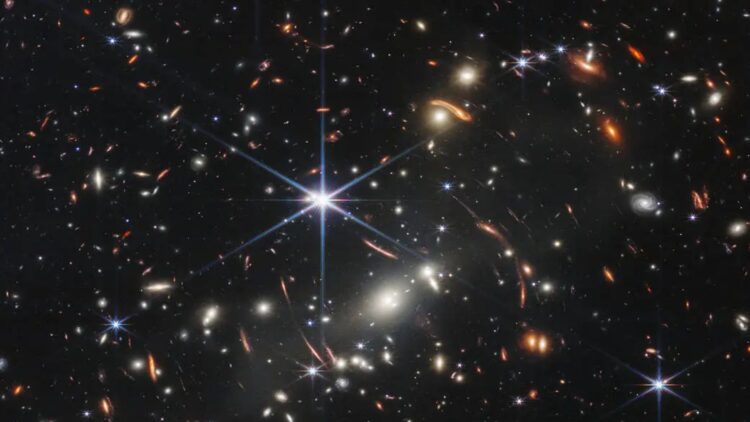Studying space is a complicated science. It requires a lot of patience and understanding of the fact that the objects that you are trying to decipher are so far away and so big that you will never be able to touch or reach them, especially in our lifetime. But not every discovery needs to be about a galaxy far, far away, there are still plenty of mysteries left in the Milky Way and the James Webb Space Telescope has just photographed one of them. Thanks to the infrared vision on the telescope, it was able to capture new details in a chaotic zone full of stars and gas that might give scientists a better idea of how the universe got its start.
That is impressive just by itself, but the fact that the images are also stunning to look at, most certainly does not hurt. They are from a region known as Sagittarius C (or Sgr C), which sits about 300 light-years away from Sagittarius A, which is considered the gigantic black hole that anchors our galaxy. Since one light-year is about 5.88 trillion miles (or 9.46 trillion kilometers), calling it close seems like belittling the technology of the telescope, but considering the expanse of the universe, this is actually no that far from us, which makes it easier to study.
Sagittarius C is a place where a lot of star formations occur, and now that the Webb telescope can see through all the dust using infrared light, astronomers cab zoom in on that process like never before. Samuel Crowe, the lead on this observation and an undergrad at the University of Virginia explained“The image from Webb is stunning, and the science we will get from it is even better.”
The new perspective that the Webb telescope brings
And the stars that we are seeing are not just pretty, they are where heavy elements are forged in nuclear cores. Crowe compared studying them to reading the “origin story of much of the universe” and knowing how these stars form, especially near the galactic center, could help answer whether the birthplace of stars differs depending on location in the galaxy.
Crowe continued “There’s never been any infrared data on this region with the level of resolution and sensitivity we get with Webb, so we are seeing lots of features here for the first time.”
In the image, there are roughly half a million stars shining at us, all varying in size and stage of life. One standout feature is a bunch of protostars, which are like baby stars still wrapped in blankets of gas and dust and at the center of that cluster sits a beast of a protostar that is over 30 times more massive than our Sun, making it a very interesting celestial body that needs to be explored.
Knowing that these exist is also helping scientists figure out how stars evolve and interact with their surroundings. For instance, the Near-Infrared Camera on Webb also caught glowing clouds of ionized hydrogen along the lower edge of the star-forming region and these emissions show up as bright cyan in the image. While this could be nothing, scientists have explained that it shows a lot more emissions show up as bright cyan in the image as it is more than young stars alone should be able to generate.
There are also some strange needle-like structures sitting inside that gas that do not seem to follow any pattern, which should be frustrating, except as Jonathan Tan, a University of Virginia astronomy professor and one of Crowe’s mentors, puts it, “The galactic center is the most extreme environment in our Milky Way galaxy, where current theories of star formation can be put to their most rigorous test.”
Rubén Fedriani, a collaborator on the project, added to that by painting a picture of the galactic core as “a crowded, tumultuous place” filled with wild gas clouds and stellar winds. “Webb has provided us with a ton of data on this extreme environment, and we are just starting to dig into it,” he said.

